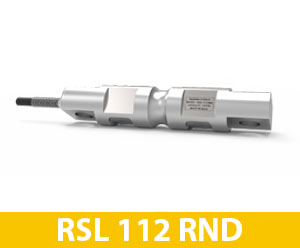In modern industrial facilities, accurate measurement of stored or processed materials is essential. Whether dealing with liquids, powders, or granular substances, tank weighing systems play a vital role in monitoring and managing inventory levels. At the heart of these systems are load cells—precision sensors that convert mechanical force into electrical signals. Installing load cells in a tank weighing system may seem complex at first glance, but with a structured approach, the process becomes systematic and reliable. This blog explores each step in detail to help engineers, technicians, and plant operators ensure a smooth and accurate installation.
Understanding the Importance of Load Cells in Tank Weighing
Load cells are critical components in tank weighing applications because they offer real-time, direct mass measurement without making contact with the actual contents of the tank. Unlike level sensors or flow meters, load cells measure the total weight of the tank, including the material and the vessel itself. This ensures exceptional accuracy in continuous processes, batching, and inventory control. With robust design and the ability to withstand harsh environments, load cells have become the preferred method for weight-based monitoring in industries like food processing, pharmaceuticals, chemicals, and wastewater treatment.
Initial Planning and Preparation
Before any physical work begins, it’s important to evaluate the tank design, process requirements, and load conditions. The type and number of load cells depend on the tank’s size, shape, mounting method, and the total expected load. Most commonly, compression or shear beam load cells are used, depending on whether the tank is mounted vertically or horizontally. Each load cell must be rated for a capacity that exceeds the maximum load, including the tank’s own weight and the material it holds. To avoid overloading or signal distortion, a safety margin—typically 150% of the expected load—is included when selecting load cell capacity. It’s also essential to decide how many load cells will be used. Three-point support offers self-leveling benefits and is suitable for smaller tanks, while four or more points are required for larger or rectangular tanks.
Foundation and Structural Requirements
A stable, level foundation is vital for accurate weighing. The surface where the load cells will be mounted must be structurally sound and capable of handling dynamic forces such as vibration, seismic activity, and shock loads. The mounting area should be flat within a tight tolerance to ensure even load distribution. Concrete pads or structural steel frames are commonly used for this purpose. It is also important to ground the foundation properly to protect the weighing system from electrical surges and static discharge.
Installing the Load Cells and Mounting Assemblies
Each load cell is installed into a mounting assembly specifically designed to provide mechanical stability and alignment. These mounts typically include rocker pins, thermal expansion mechanisms, and anti-lift restraints. During installation, the mounting plates are first anchored or welded onto the prepared foundation. The load cells are then placed into these assemblies without applying any load at this stage. It’s essential that all mounting positions are co-planar to ensure balanced load distribution once the tank is placed on top. Shims may be used to level the load cells if needed. The mounting assemblies are designed to allow slight movement due to thermal expansion and to accommodate slight misalignments during installation, which helps to protect the sensors from mechanical stress.
Mounting the Tank onto the Load Cells
Once the load cells are securely mounted, the tank is carefully lowered onto them using appropriate lifting equipment. This step must be done with caution, ensuring the tank’s weight is distributed evenly across all load cells simultaneously. Never allow the full weight of the tank to rest on a single load cell, as this can lead to overload damage. The tank should be equipped with mechanical stops or lateral restraints that prevent horizontal movement without restricting vertical motion. Proper positioning is crucial, and once the tank is set, it should be firmly secured while still allowing the load cells to flex freely under vertical load.
Wiring the Load Cells and Installing the Junction Box
After the tank is mounted, the electrical wiring begins. Each load cell comes with a set of wires for excitation and signal output. These cables are routed to a junction box that sums the outputs of all the load cells and transmits a single signal to the weight indicator or controller. It’s critical to use shielded cables to prevent electrical noise and interference. Cables must be routed carefully to avoid sharp bends and should be kept clear of high-voltage lines or motor controls. Strain relief devices should be used at all cable entry points to prevent mechanical stress. The junction box should be installed in a protected location and sealed against dust, moisture, and corrosive vapors.
Connecting to the Controller or PLC System
The signal from the junction box is fed into a digital weighing controller or an industrial PLC. This device is responsible for interpreting the signal, displaying the weight, and performing control functions such as batching, filling, or level alarming. During setup, the technician must configure the controller with parameters such as load cell capacity, output sensitivity (in mV/V), and any necessary filtering or averaging functions. Communication protocols like Modbus, Profibus, or Ethernet/IP can be configured at this stage for system integration. Some advanced controllers also support remote monitoring, real-time data logging, and connectivity to SCADA or MES platforms.
Calibrating the Tank Weighing System
Calibration is one of the most important steps in ensuring accurate weight readings. The ideal method is to use certified test weights that are placed on the tank in known increments. This allows the system to be scaled properly and checked for linearity across the operating range. If test weights are impractical due to the tank’s size or location, a theoretical calibration using load cell specifications can be performed, though this is less accurate. Zero calibration is also critical and should be done when the tank is completely empty. This sets a reference point that ensures subsequent readings are accurate.
Testing and Verifying the Installation
Once calibration is complete, the system must be tested under operating conditions. Each load cell should be checked individually for signal integrity using a multimeter. The weight readings should be stable, linear, and consistent. If any drift or instability is observed, the installation should be inspected for grounding issues, cable interference, or mechanical obstructions. It’s also important to check that the tank restraints are not bearing any part of the vertical load, as this would lead to inaccurate measurements.
Maintenance and Safety Practices
Like all industrial systems, tank weighing systems benefit from periodic inspection and maintenance. Load cell cables should be checked regularly for wear, corrosion, or rodent damage. Moisture ingress in the junction box can cause signal errors, so it should be sealed and inspected as needed. Depending on usage, recalibration is recommended every 6 to 12 months. In high-risk environments, consider using surge protectors and implementing proper grounding to protect the system from power disturbances. Following safety standards and manufacturer guidelines ensures long-term system reliability and accuracy.
Conclusion
Installing load cells in a tank weighing system is a critical process that requires precision, planning, and technical expertise. From selecting the right type of load cell to careful mechanical installation and proper electrical integration, every step plays a vital role in delivering accurate and consistent weight measurements. When executed correctly, these systems not only enhance operational efficiency but also provide valuable data for automation, inventory control, and quality assurance. For complex setups, consulting with experienced weighing system professionals or manufacturers can ensure optimal results and long-term performance.








